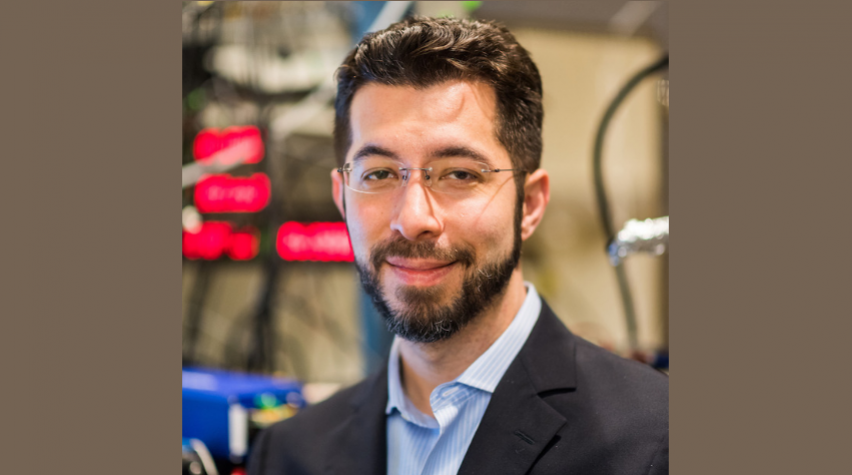
Ed Boyden is Y. Eva Tan Professor in Neurotechnology at MIT, associate professor of Biological Engineering and Brain and Cognitive Sciences at MIT's Media Lab and McGovern Institute for Brain Research, and was recently selected to be an Investigator of the Howard Hughes Medical Institute (2018). He is also a keynote speaker at the Optogenetic Technologies and Applications conference in Boston, MA. We recently caught up with Ed to find out what we can expect during the conference.
What specifically will you be talking about at the conference?
Ever since our first paper on optogenetic control of neurons, in summer 2005, we have been working to perfect the optogenetic tools — to make them as fast, noninvasive, powerful, and spatially precise as possible. I will talk about our progress towards those goals. Perhaps thousands of researchers are now using these tools to activate and silence neurons in the brain, to figure out how they contribute to behaviors, pathologies, and potential treatment strategies. In addition, it is becoming increasingly clear that optogenetics works best when used in conjunction with other technologies that enable mapping of the brain, or imaging of the dynamics of the brain. I will talk about two complementary technologies we are developing: expansion microscopy, which enables very detailed brain maps to be made by physically expanding brain specimens so that very fine details become visible even under ordinary microscopes, and voltage imaging, which enables the high-speed electrical dynamics of the brain to be observed, using simple fluorescent microscopes.
What are your long-term goals with neurology and optogenetics?
My hope is to integrate these three technologies — voltage imaging, optogenetics, and expansion microscopy — so that we can derive more complete pictures of how brain circuits compute decisions and emotions. My dream experiment is to image all the neural activity throughout an entire brain, using voltage imaging, use optogenetics to perturb neural activity so we can see how cells trigger behavioral events, and then use expansion microscopy to acquire molecular and wiring maps of the brain circuits, so we can see how information flows and is transformed. Hopefully, we can synthesize the resulting three datasets into computational models of how brain circuits compute phenomena like decisions and emotions.
What are some of the challenges in this field of research?
Everything is challenging! Imaging dynamics across entire brains is complex, controlling dynamics across entire brains is complex, and mapping the structure and molecular composition of the brain is complex. Fortunately the technologies we developed, starting almost 20 years ago, are starting to help make these things more feasible, but there are many challenges ahead, including how to optimize and integrate the tools to maximize their power, and figuring out how to analyze the data.
Where do you see the future of optogenetics heading?
Optogenetic tools for controlling neural activity are maturing. We now have greatly redshifted molecules, which can be activated by red light, which goes deeper in the brain than other colors of visible light. We have very fast molecules, with speeds comparable to the fastest neural codes in the brain. We have molecules that enable extremely large photocurrents, capable of controlling cells very powerfully. Of course, the optical hardware must be scaled up so that we can control many cells individually, across extended brain circuits. And as noted above, we need complementary tools that enable the mapping of the brain and the dynamical imaging of the brain, which are starting to come to fruition.
How do you envision developments in optogenetics advancing some of the Grand Challenges in engineering and society?
Well, one of the grand challenges is to "reverse-engineer the brain"! So we are directly confronting that one. Understanding the brain could help reveal new ways to treat brain disorders that affect over a billion people around the world — none of which can be fully cured. That would directly impact the Grand Challenge of "engineer better medicines." Beyond the medical side, understanding how the brain computes decisions and emotions could broadly help us understand what it means to be human — which impacts everything. What if we can think better, be more ethical, be more creative? If we can understand how the brain works, that opens up new opportunities to figure out where we are headed as a species, and perhaps go in the direction that we want to go, by augmenting the functions we want to.
Learn more about Optogenetic Technologies and Applications Conference.

Edward Boyden
Ed Boyden leads the Synthetic Neurobiology Group, which develops tools for analyzing and repairing complex biological systems such as the brain, and applies them systematically to reveal ground truth principles of biological function as well as to repair these systems. Read more


